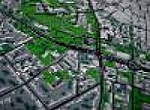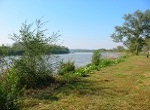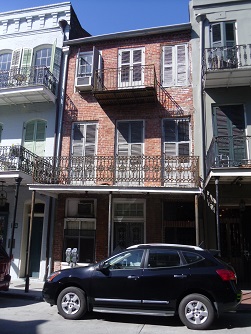Land Use Classifications Can Vary With Your Needs

Last Updated: October 19, 2022
Land use classifications are what you call the different desired or planned categories of future land uses on your comprehensive plan map or other document. Traditionally, the broad groupings are residential, commercial, and industrial, and the terms can become more fine-grained from there.
You need to call out residential. It would be great if you could just specify a minimum housing density as well as the more common maximum housing density (a number expressed in housing units per acre), but I haven't worked in any city yet that would stand for that.
Probably your community
expects single-family detached housing to be separated from
single-family attached, multi-family, and perhaps other housing types
common in your community, which could be anything from two-family (duplexes),
four-family to live/work units. Somehow whether or not there are common walls still seems to matter to many people.
Common ground in condominiums and subdivisions should be classified with the housing it is attached to, unless what people call "common ground" is actually for public use.
However, we caution you not to make your categories more intricate than necessary. Think about whether it really matters whether this land becomes attached row houses or just another dense housing form, such as zero-lot line or patio homes.
In fact, it is time to consider whether distinctions between single-family homes, duplexes, and triplexes make any sense at all. In light of the acceptance of accessory dwelling units in a growing number of cities and states, without seeming social catastrophes directly caused by these ADUs, it could be that some of our classification systems for residential need to be flatter.
You also need commercial land, and many communities will divide that into retail, office, wholesale, and other. A distinction between retail (furniture stores and shopping centers, for example) and neighborhood commercial (convenience stores and coffee shops, for instance) is extremely common.
Often the square footage of the store is part of the line of demarcation between neighborhood or light commercial and regular commercial.
Offices sometimes are separate land use classifications. Warehouses occasionally are called commercial, but just as often they will be considered industrial in older cities.
Some cities will map automotive dealerships and uses, big box stores, and so forth. The problem is that the more specific you become in a land use map, the less flexibility you are giving both the property owner and the local government to adapt to changing trends in commercial activity and shifts in markets.
If you have industry, the traditional categories are light industry and heavy industry, each with a list that might be comprehensive for what exists now in town, but which would be increasingly difficult to keep current.
Perhaps more workable will be light industry, storage and warehousing, research facilities, and so forth. With some cities developing a science-intensive research to entrepreneurship pipeline, innovation centers and the like may need to be considered entirely separately from machine shops. One of the authors of this website recently consulted with a large city that condensed industrial classifications into simply "science and technology" and "traditional manufacturing."
An institutional category should be divided as appropriate into educational (sometimes as intricate as early childhood, K-12, higher education, libraries, and vocational education), and then hospitals and medical facilities.
Most places have a government category, which can pertain either to only government owned and occupied buildings, or which might apply to anything your government owns and governs. The latter practice doesn't make a lot of sense sometimes, when you have city hall, a cemetery, a water treatment plant, a library, a golf course, a pocket park, and a power plant all sharing the same land use category. It's better to sort the government-owned property into appropriate land use classifications, such as office, open space, education, and industrial.
Then you will need to consider open space (usually demarcated separately from vacant land). Open space typically is conservation land. Sometimes parks are included in the open space and sometimes in government or a recreation category. Recreation can be public or private.
Cultural facilities, such as concert halls or live theatre, may be given a category, or they may be combined with educational facilities, or broadly collapsed into institutional land use along with education, government, health, culture, and major non-profits.
Transportation and utilities often pop up as separate. Typically parking does not count as a separate category, since it is regarded as accessory to the main use. However, large shared or district parking lots usually belong to this transportation category.
Now with the prevalence of conscious and relatively new mixed-use development, you can see that land use classifications isn't a topic where we can give you one definitive answer as to what categories you should have.
In fact, a detail-oriented future land use map might specify simply "planned development," "planned large-scale development," "mixed-use development," "vertical mixed-use" (where you want residential on top of stores or office on top of retail, for example), or "transit-oriented development." All of those are worth your discussion.
Our point of view on this is that you should do what fits your town or city, and divide prospective and existing uses into as many categories as are really useful to you but not any more.
In other words, our experience as planners is that there should be a policy reason, not just a neatness reason, why it's important to differentiate multi-family residential from single-family residential, or why cultural and educational institutions can't fall into the same category.
The Ecological Perspective on Land Use Classifications Is Called Land Cover
In the U.S., the Department of Interior maintains a land cover classification system. From the standpoint of what they call remote sensing, which means aerial photography, the earth is divided into nine types of land cover:
- Urban or Built-up Land (almost everything we're discussing in the rest of this article on land use classifications)
- Agricultural Land
- Rangeland
- Forest Land
- Water
- Wetland
- Barren Land (this includes beaches, so wipe those negative thoughts out of your mind)
- Tundra
- Perennial Snow or Ice
This system, which has sub-categories, by the way, can stretch to accommodate four levels of remote sensing, varying from LANDSAT satellite imagery to flights made at under 10,000 feet.
The United Nations also has been working with the idea of land use classifications, but there is no international agreement yet on an appropriate standard.
While land cover categories may be quite useful for an entire state or province, for instance, as you can see, they are of little use in a city. When we worked within a fairly large region of a state, however, these were useful planning tools indeed.
The Sophisticated Way to Go: The Land-Based Classification Standards
In 1996 six federal agencies and the American Planning Association finalized what they call Land-Based Classification Standards (LBCS), supposedly to allow federal, state, and local governments to share information about land use, especially as it relates to highway planning, in a uniform manner.
So if you want the Cadillac of land use classifications, look at their system that divides land on five dimensions: activities, functions, building types, site development character, and whether ownership is public or private.
This gives five dimensions, each of which has nine possible values, each delineated by a color. The color coding helps with things such as GIS (geographic information systems, meaning computer-based mapping of characteristics thought of as layers that can be combined or viewed separately).
Now that gives you 45 land use classifications, if you want to use that many. Frankly, we think that unless you are likely to need this federal or state coordination approach, there's very little reason for you to concern yourself with this system.
However, if you need to go that way, you can read the LBCS standards here.
So in sum, talk about what makes sense for you. Include a consideration of your comprehensive plan elements and how land use regulation fits into the plan. If your municipality frequently faces the prospect of having to plan for annexation, think about what is happening outside the city limits as well. Lastly, of course, it is helpful to know if you plan traditional zoning regulations, a form-based code, or a transect approach to land use regulation.
These Pages Might Help You Figure Out Your Land Use Terminology
Join USEFUL COMMUNITY PLUS, which provides you monthly with short features or tips about timely topics for neighborhoods, towns and cities, community organizations, rural environments, and our international friends. Unsubscribe any time. Give it a try.





